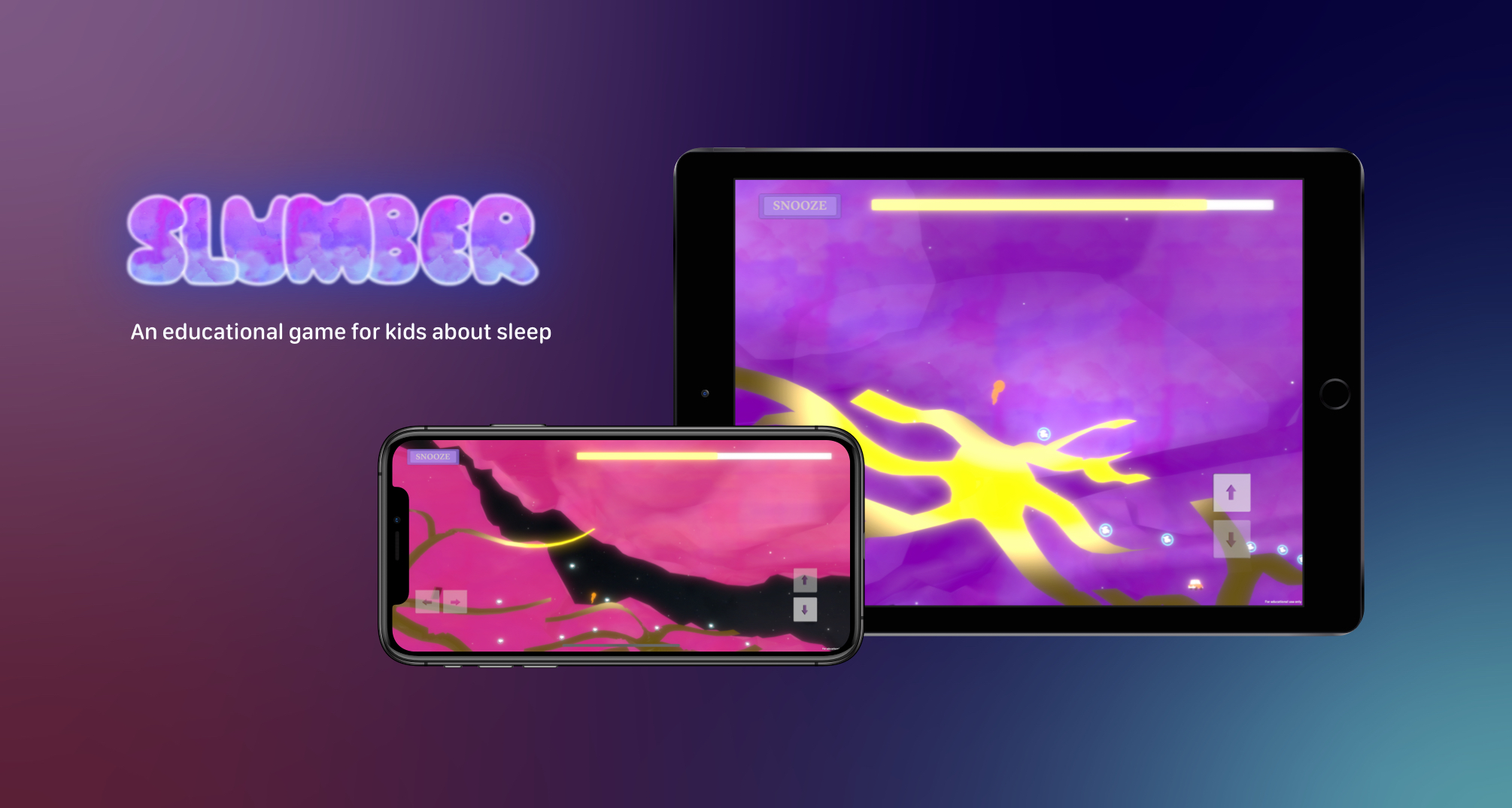Slumber Video Game Prototype
Art direction, concept, and pitch for a demo prototype of an immersive 3D videogame world introducing kids to sleep science. Inside a sleeping brain, players maintain brain function and fix neurons as they progress through the stages of sleep.Project Type
Competitive student group project, Prototype & Presentation
(”Videogame Design and Development” led by Christopher Weaver)
Competitive student group project, Prototype & Presentation
(”Videogame Design and Development” led by Christopher Weaver)
Duration
4 months, Feb–May 2019
Advisors
Christopher Weaver, Jeanine Basinger
4 months, Feb–May 2019
Advisors
Christopher Weaver, Jeanine Basinger
My Roles
Development —Original Concept, Producer / Project manager, Art director, Level designer, Debugger, 3D assistant
Teaser trailer — Director, Video editor, Storyboarder
Presentation — Opening & closing pitch speaker, Keynote presentation graphics & motion design
Tools
Unity, Xcode, Notion, Blender, Final Cut Pro, Keynote
Unity, Xcode, Notion, Blender, Final Cut Pro, Keynote
Collaborators
Aili Niimura, Cobey Arenal, Emma Freeman, Lee Kravchenko
Aili Niimura, Cobey Arenal, Emma Freeman, Lee Kravchenko

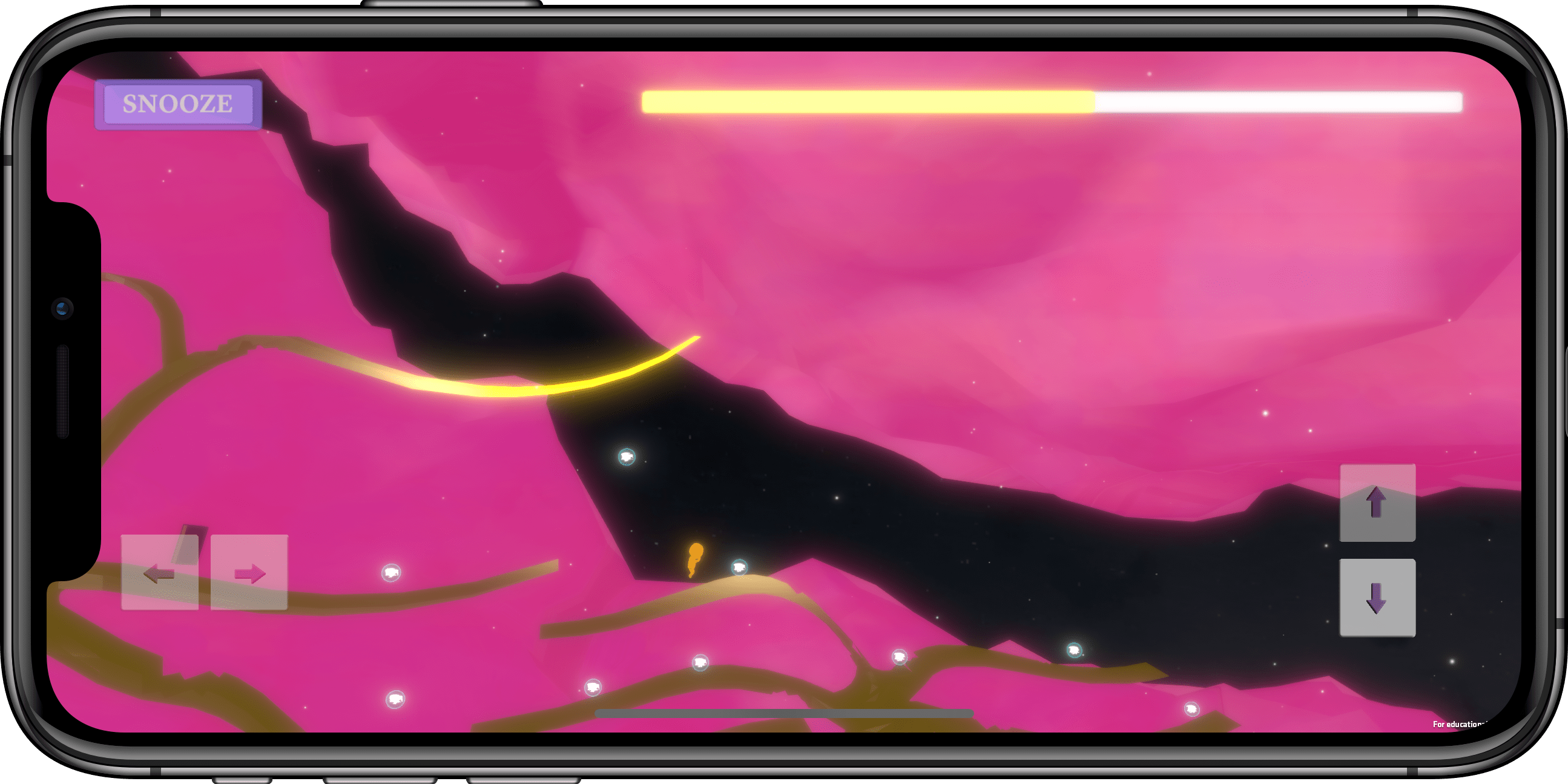




Overview
Christopher Weaver (founder of Bethesda Softworks, Exec. Producer of The Elder Scrolls RPG series, and professor at M.I.T.) leads a selective and fast-paced game development competition/intensive at Wesleyan. Along with three other students, I developed a prototype demo for an iOS video game that introduces sleep cycles and brain science to elementary schoolers. I served as project manager and oversaw the art direction, business pitch, and demonstration. The course explored software development through art, programming, science, and business perspectives and provided a unique opportunity for multidisciplinary collaboration. At the end of the semester, we premiered our demo at an elementary school games festival. We presented to a jury of invited industry professionals, including A.F.I. board emeritus Jeanine Basinger and executives from Harmonix, Demiurge Studios, Warner Bros. Games, and Wesleyan’s I.D.E.A.S. program.*
Our 35-minute pitch, which included a demonstration, ad campaigns, art, videos of the festival, and a companion hypothetical “business strategy,” impressed the judges. They awarded us first place for having the “most original concept and execution, clear benefit for social good with little investment, exciting and highest quality business presentation, and grasp of the industry’s various technical, strategic, and business environments.”
(Note for photosensitive viewers: this page features motion & depth content)
*The full judge panel:
- Jeanine Basinger, Film scholar and American Film Institute board emeritus
- Greg Lopiccolo, Harmonix VP of Project Development
- Dan Scherlis, Warner Brothers Games Boston (formerly Turbine Entertainment) former CEO
- Nathan Sitkoff, Demiurge Studios Engineering Director
- Will Jennings, Demiurge Studios Director of Art
- Francis Starr, Wesleyan I.D.E.A.S. program director
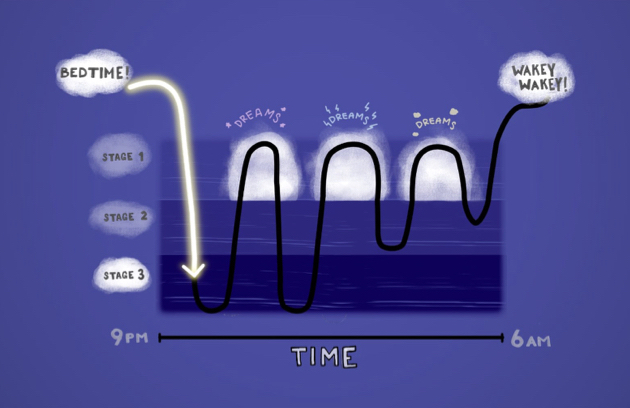
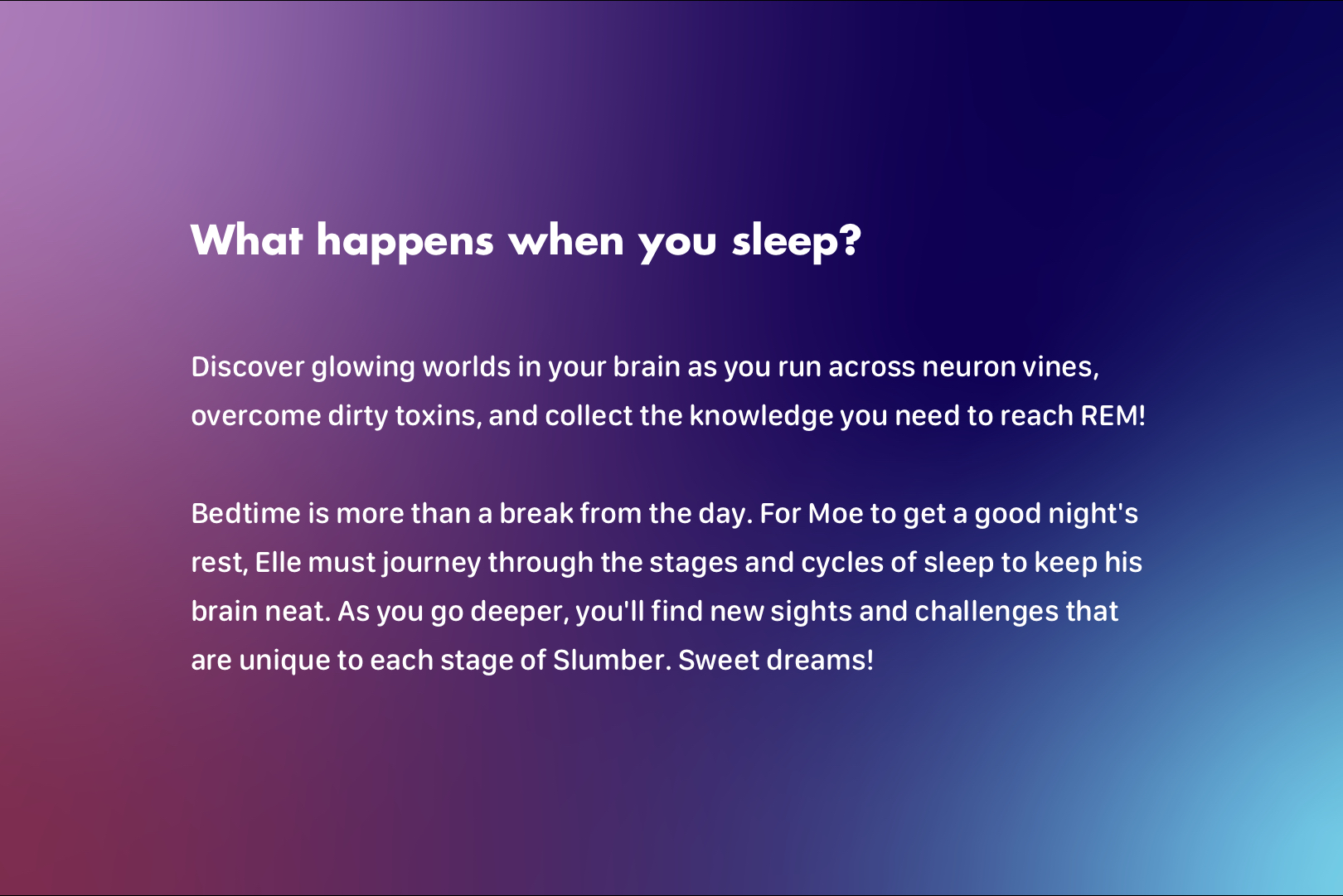
Your brain works while you sleep
After admission, each student presented a 30-second pitch for a game that would teach a STEM concept (e.g. the water cycle) to elementary schoolers. The pitches were put up to a vote, and each of four students with the most votes became a project manager leading a team to develop their concept into a competing demo.My pitch to the class was as follows:
It's easy to think of bedtime as simply a break from being awake—it's when you completely shut down your body for hours... But your mind actually goes through a huge effort and transformation to get a good night's sleep.
It becomes a world where belief in the unbelievable happens.
In this adventure platformer, you venture into that strangeness. You journey through the mind to gather resources for your health before the sun rises and wakes you up. And as you go deeper, you find new sights and challenges unique to each stage of Slumber.
(See also: the more detailed proposal doc︎︎︎ I shared after the pitch).
It becomes a world where belief in the unbelievable happens.
In this adventure platformer, you venture into that strangeness. You journey through the mind to gather resources for your health before the sun rises and wakes you up. And as you go deeper, you find new sights and challenges unique to each stage of Slumber.
(See also: the more detailed proposal doc︎︎︎ I shared after the pitch).
In my pitch, I focused on the idea of sleep and its potential for an immersive experience rather than specific mechanics or gameplay. It’s a challenging concept as sleep is not commonly taught in education (let alone games) and could be too complex for the elementary level. But it was exciting to try conceptualizing an immersive experience that would allow kids to understand the functions of sleep in the brian intuitively.
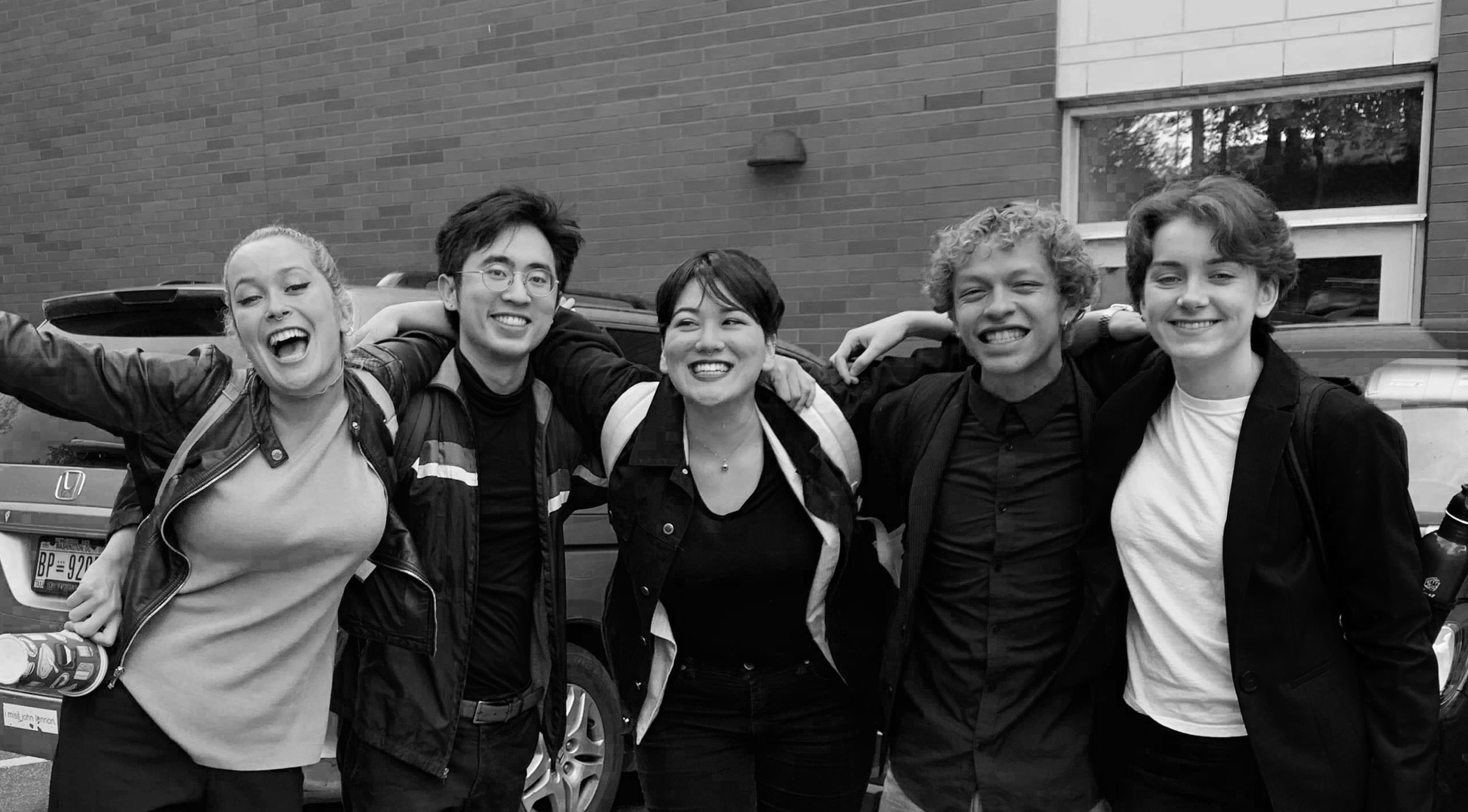
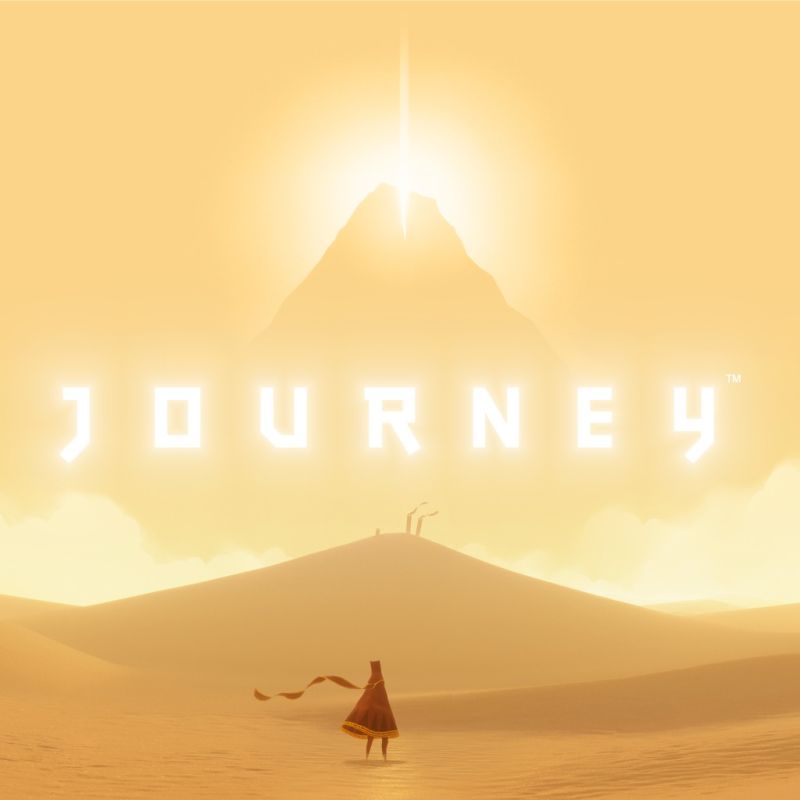

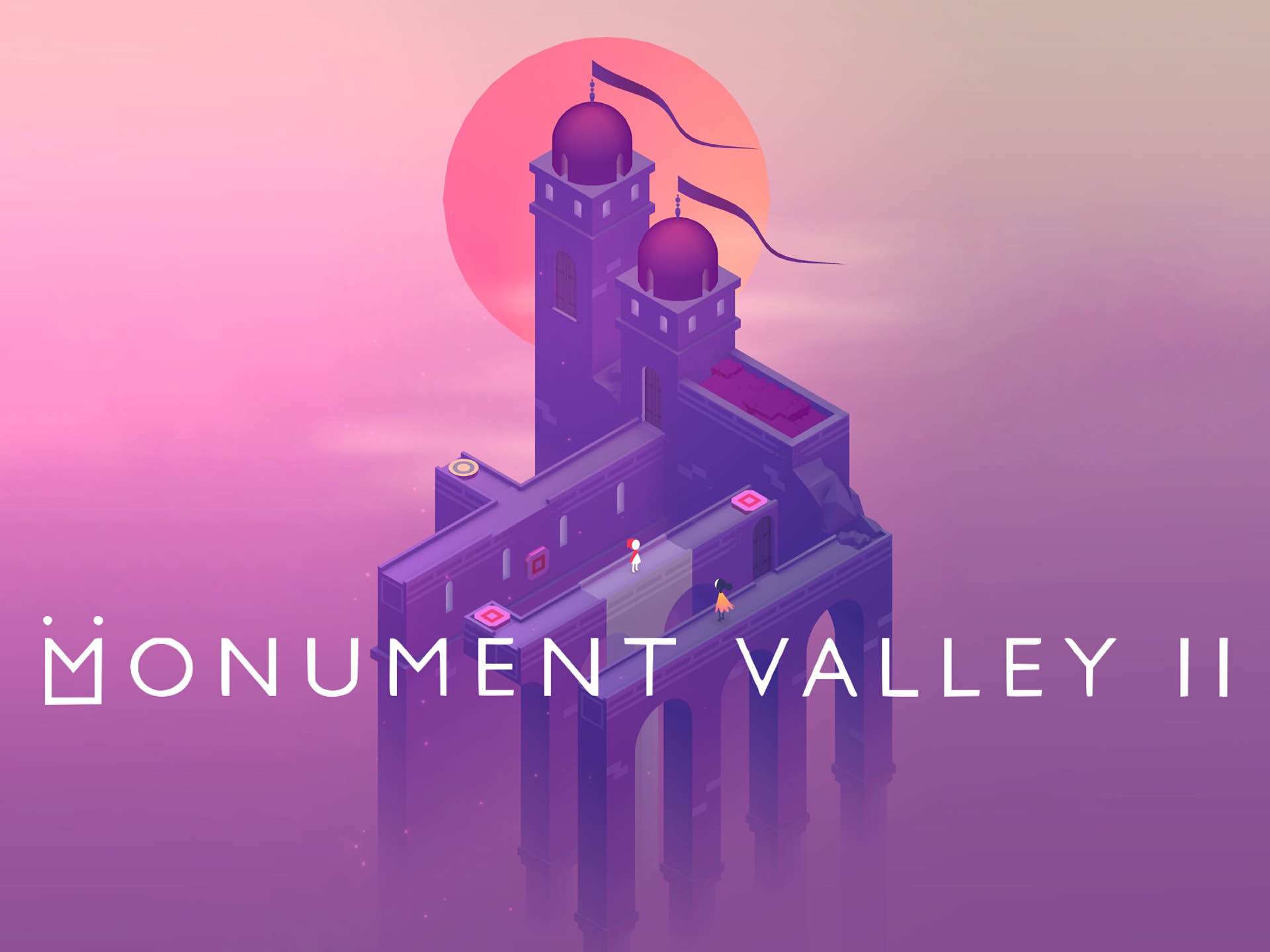
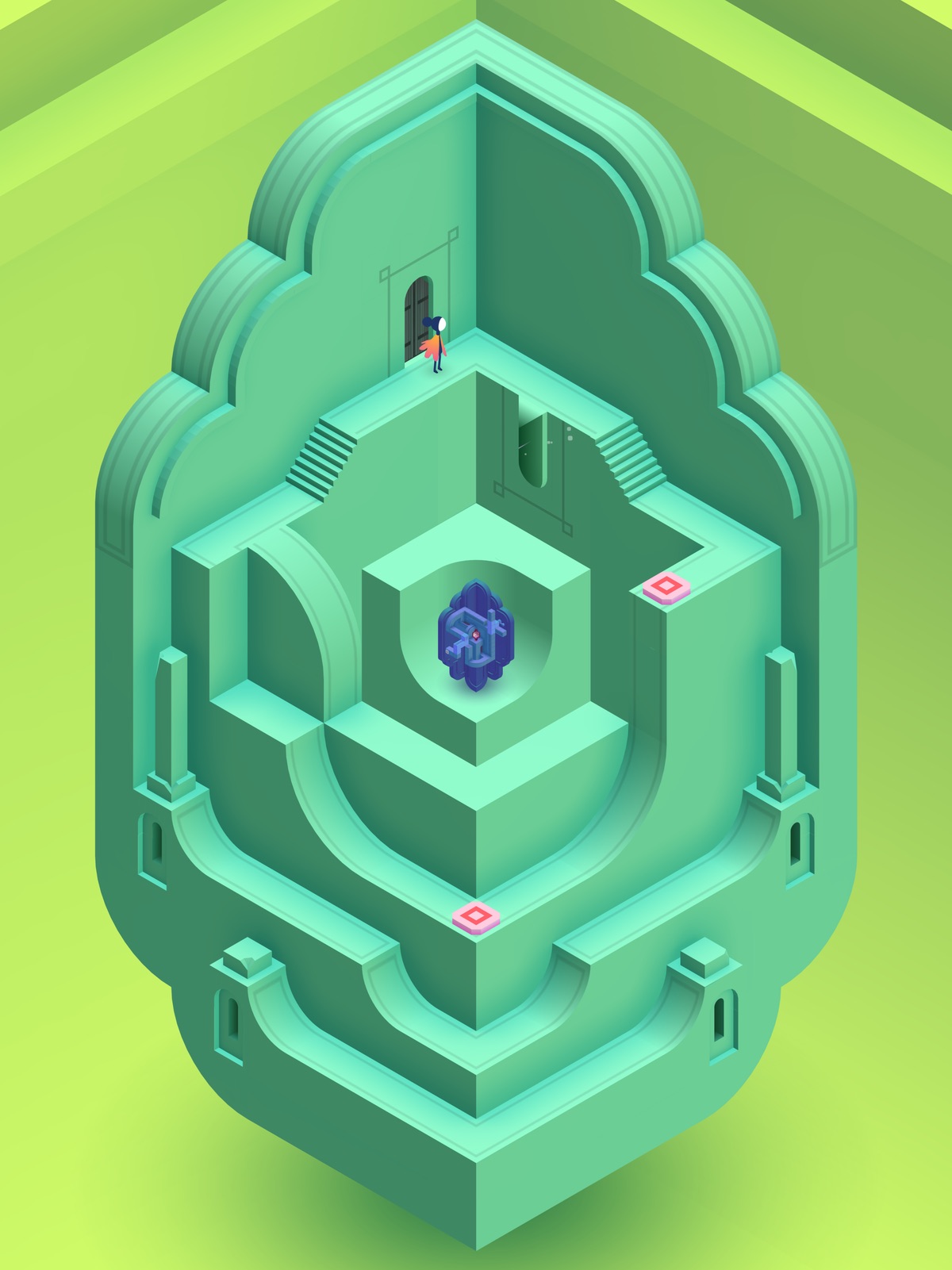

We looked to Journey and Monument Valley for inspiration.
Designing the game: Video games narrativize learning curves
Games encourage users to learn new interaction patterns through “juicy,” responsive feedback systems emphasizing fun & delight. These systems are especially engaging when integrated tightly with some form of narrative. In that regard, video games narrativize learning curves. I wanted to do the same with the natural journey one takes as their brain makes its way through sleep stages. (Read more about how Games inspire UX here. I love this article.)I looked to minimalistic narrative games that (1) exemplified this organic onboarding/storytelling blend and (2) appealed to all ages. Journey and Monument Valley are among my favorite video games that do this (and have much in common with my favorite films). They both present:
- A clear set of motifs & themes integrated with pivotal game moments.
- Highly evocative, emotional visual and audio aesthetics.
- Simple, streamlined game mechanics allowing for fast onboarding, minimal HUDs, and a focus on the game environment.
I wanted players to feel a sense of awe and wonder at the brain’s inner workings—to observe that the brain is not dormant during sleep but instead filled with electrical, pulsating activity.
Our core educational concepts relating to the stages of sleep mapped well to a progressive and playable narrative. Before we ultimately reduced our scope, we planned to base each level of the game on a complete sleep cycle, with each level culminating in a satisfying and feedback-rich REM dream sequence similar to the heavenly final stage of Journey. In each descending stage, players would perform different functions related to maintaining the brain’s health:
The stages of sleep—our original structure for each level
- Stage 1: Players journey into the brain as it transitions into sleep. Here, it's relatively easy to be woken up and lose your 💤 pickups which maintain player health / brain function.
- Stage 2: Players observe that the brain itself is actually quite active while you sleep. Neurons are firing and communicating in the environment, and players must repair connections by passing broken links.
- Stages 3-4: Players observe as the brain cleans/flushes out neurotoxins. Spaces in the terrain (brain cells) widen and fluid washes them out. Then the brain reaches a dormant state of growth and repair before players launch into REM.
- REM: Players fly and soar through REM, where the brain synthesizes memories. This is a satisfying payoff level, where players have infinite health and see the brain process all the pickups they have gathered.
Each of the above stages had wide and exciting potential for wonder and adventure, and I was excited to explore with my team how best to leverage interactive audiovisuals and mechanics for each stage. (You can see much of our initial explorations in the game design document we developed here on Notion︎︎︎)
Presentation Design and Competitive Assessment
First few slides of our presentation.
Earlier section of the presentation explaining the stages of sleep.
Slumber vs. Competitors
Why should Slumber exist? Although the class wasn’t a business course, we were asked to create a hypothetical business plan to make a stronger case to the judges and demonstrate a product strategy. We explored working directly with schools to incorporate sleep science into health curriculums for Grades K-8. As part of our presentation's risk & competitive analysis, I looked at several competitors and assessed how we would differentiate Slumber.There weren’t formidable direct competitors in the area of educational games focused on sleep science. There were “interactive” activities teaching kids about sleep, such as the National Sleep Foundation-sponsored Sleep for Kids and “Snooze clues,” but none that were immersive and stimulating video games. We believed that Slumber went much further.
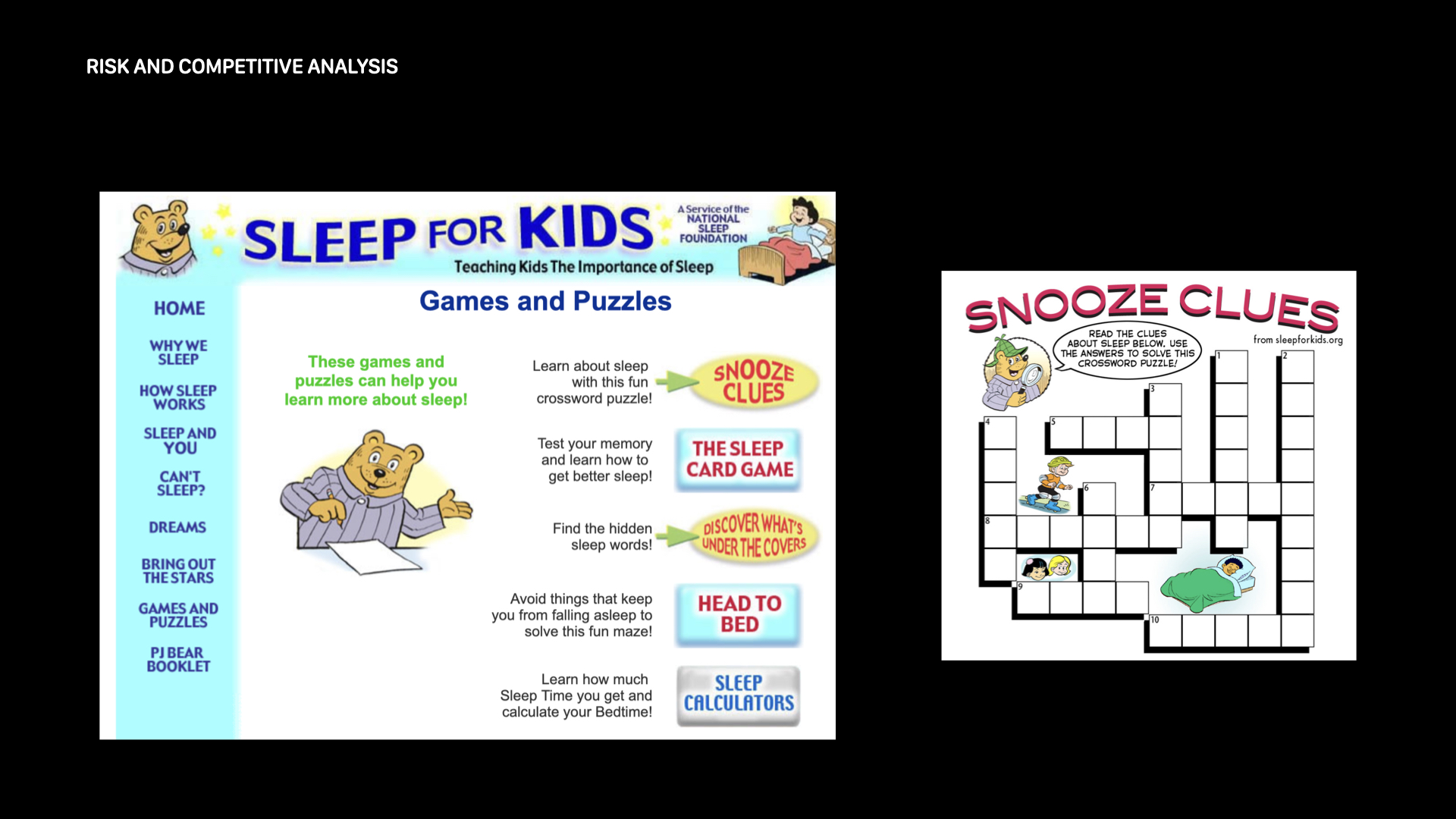
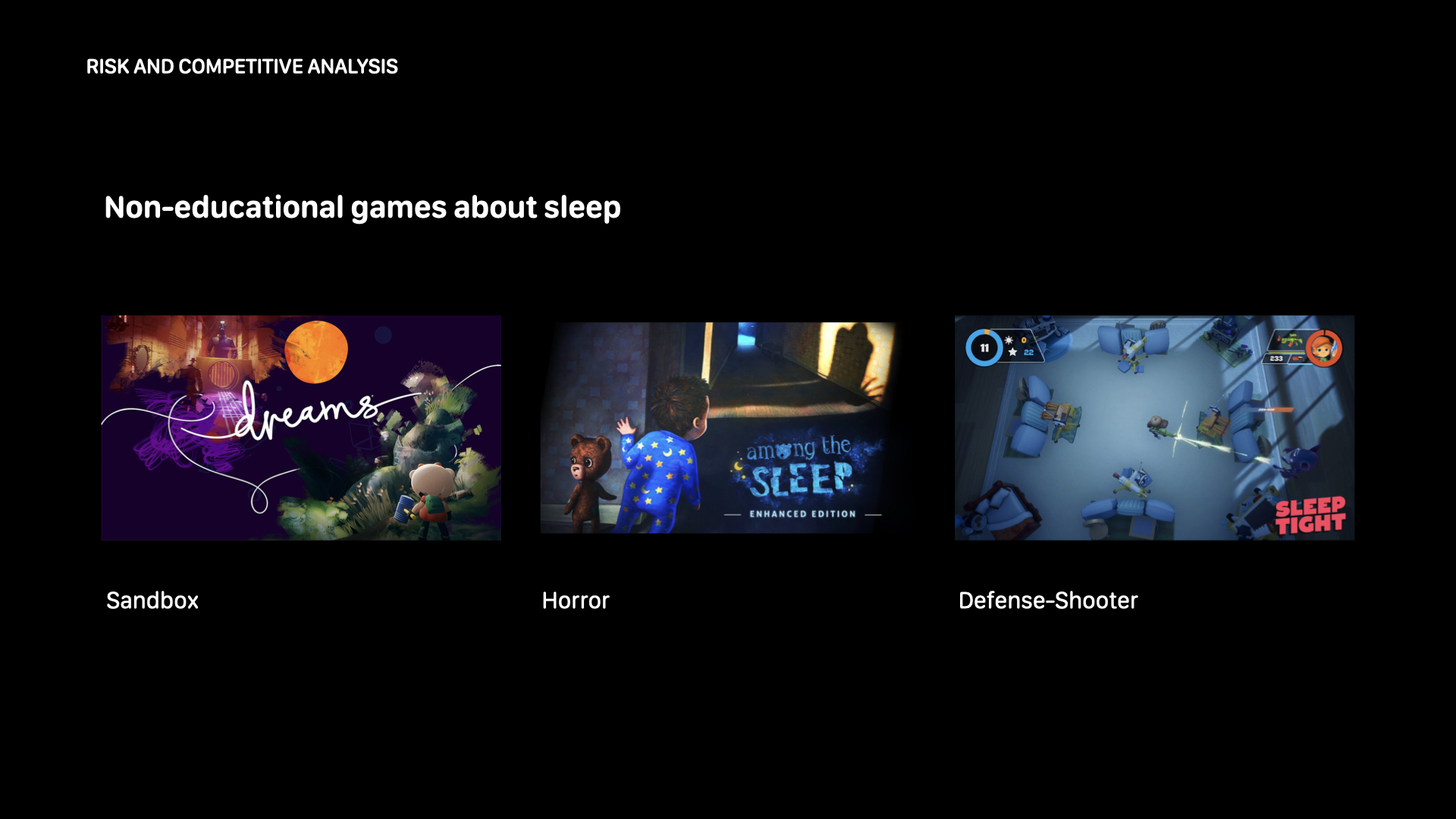
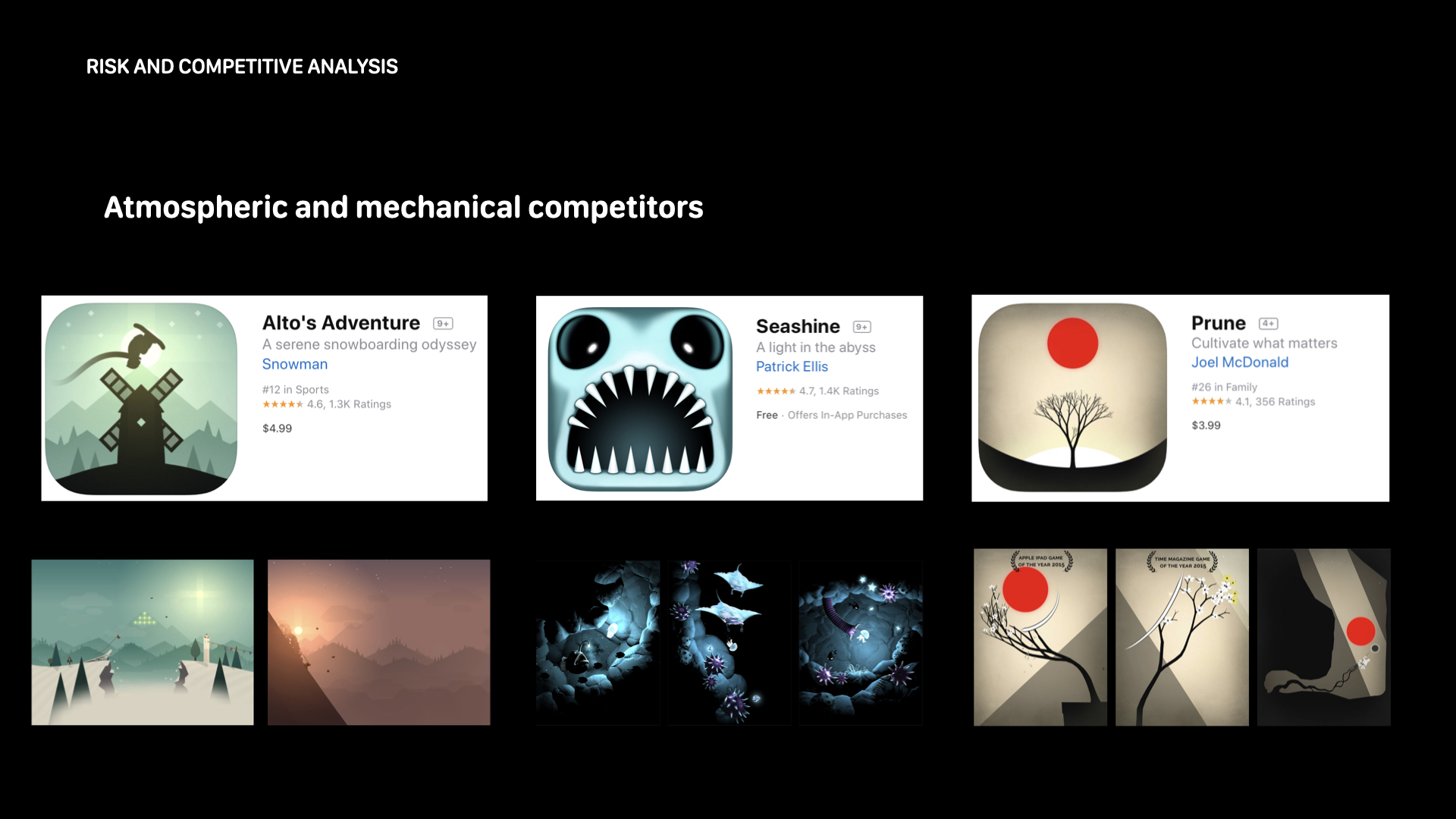
I also looked at indirect competitors. Non-educational games about sleep tend to indulge in the fantastical elements of dreaming and do not take the same minimalistic approach as our game. Most of Slumber would occur in the non-dreaming parts of sleep and would be set within the brain itself, with dream stages only working as concluding sections to each sleep cycle/level.
We saw iOS games with a similar atmosphere, art style, and gameplay mechanics as closer indirect competitors (in this part of our presentation, I also took this as an opportunity to differentiate ourselves within the competition by selecting example games that resembled those of our competing teams):
All in all, games that compete with our gameplay in terms of atmosphere, mechanics, and goals do not meet the same unique sum of parts our team designed. The reasons all came down to the novelty of our concept as the first educational, kid-oriented game about sleep science—one that would be immersive, rooted in scientific principles, and educational through its setting and atmosphere.
We saw iOS games with a similar atmosphere, art style, and gameplay mechanics as closer indirect competitors (in this part of our presentation, I also took this as an opportunity to differentiate ourselves within the competition by selecting example games that resembled those of our competing teams):
- Alto’s Adventure contains atmosphere-driven pleasures as players travel across vistas. While this game puts players in a similar state of trance and awe as our game, the concept, gameplay, and story are fundamentally different and would not challenge those same elements of our own.
- We had taken inspiration from Seashine for our health-depletion mechanic. Slumber would use the mechanic in a different context and gameplay by making players’ forward movement and collection of sleep quality pickups through the sleep stages essential to healthy brain functioning.
- Prune is a puzzle game about caring for and maintaining plants by guiding them toward the light, which Slumber fans might appreciate for its similar non-competitive and care-taking goals. However, Slumber’s mechanics create distinct value as a more active and involved experience, as players maintain the brain’s health by running, jumping, exploring, and surviving.
All in all, games that compete with our gameplay in terms of atmosphere, mechanics, and goals do not meet the same unique sum of parts our team designed. The reasons all came down to the novelty of our concept as the first educational, kid-oriented game about sleep science—one that would be immersive, rooted in scientific principles, and educational through its setting and atmosphere.
More selected slides
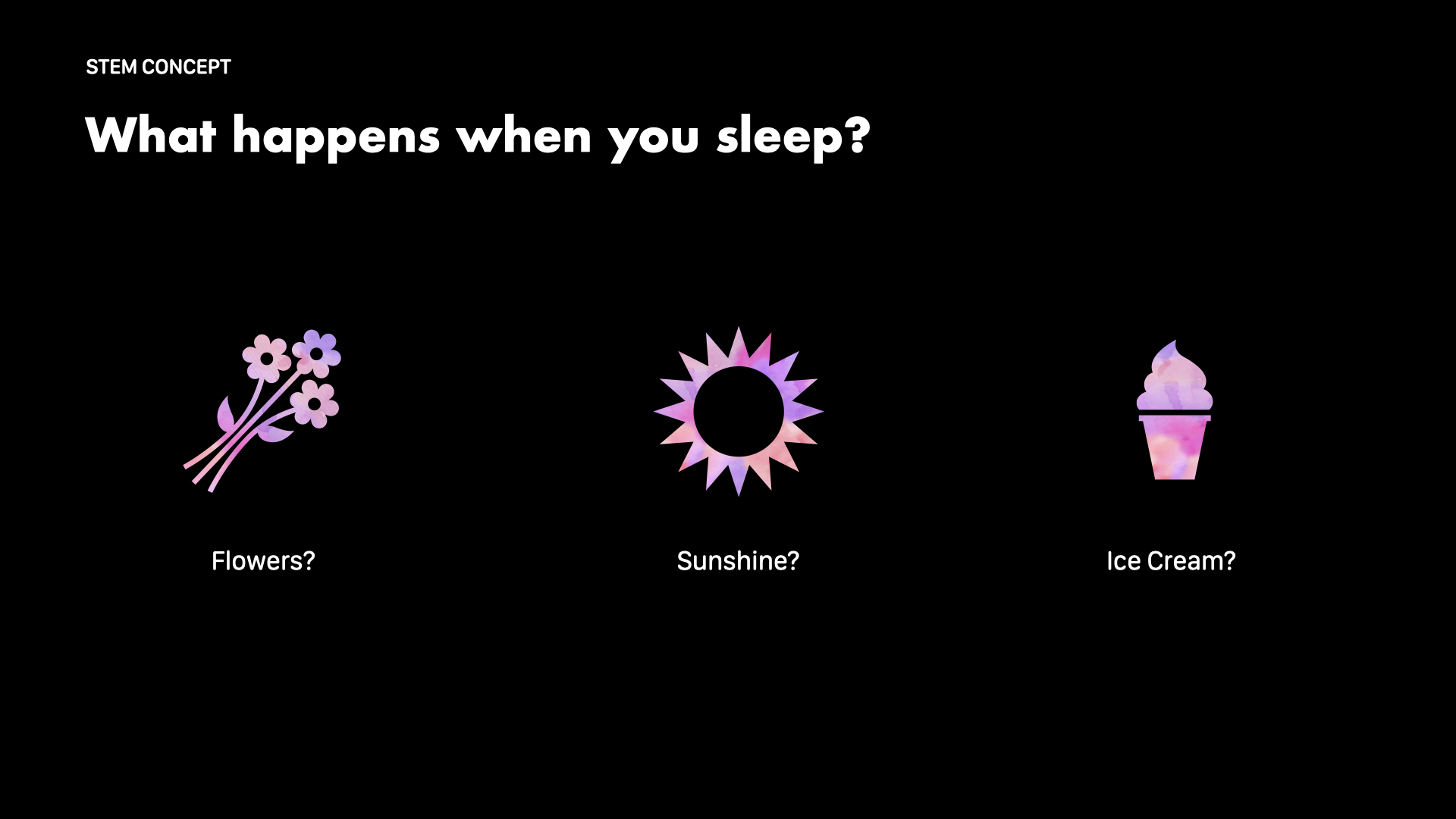
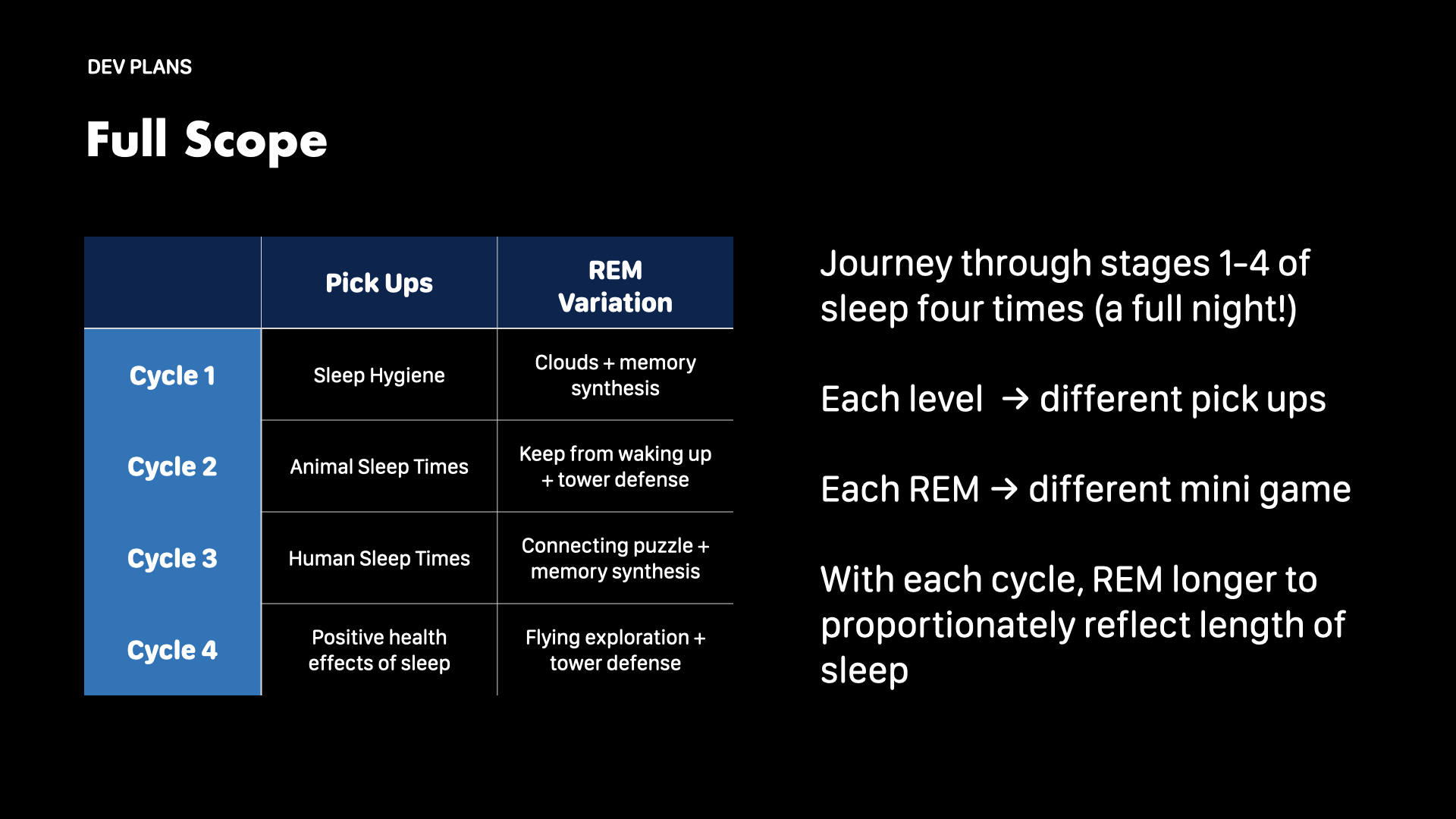
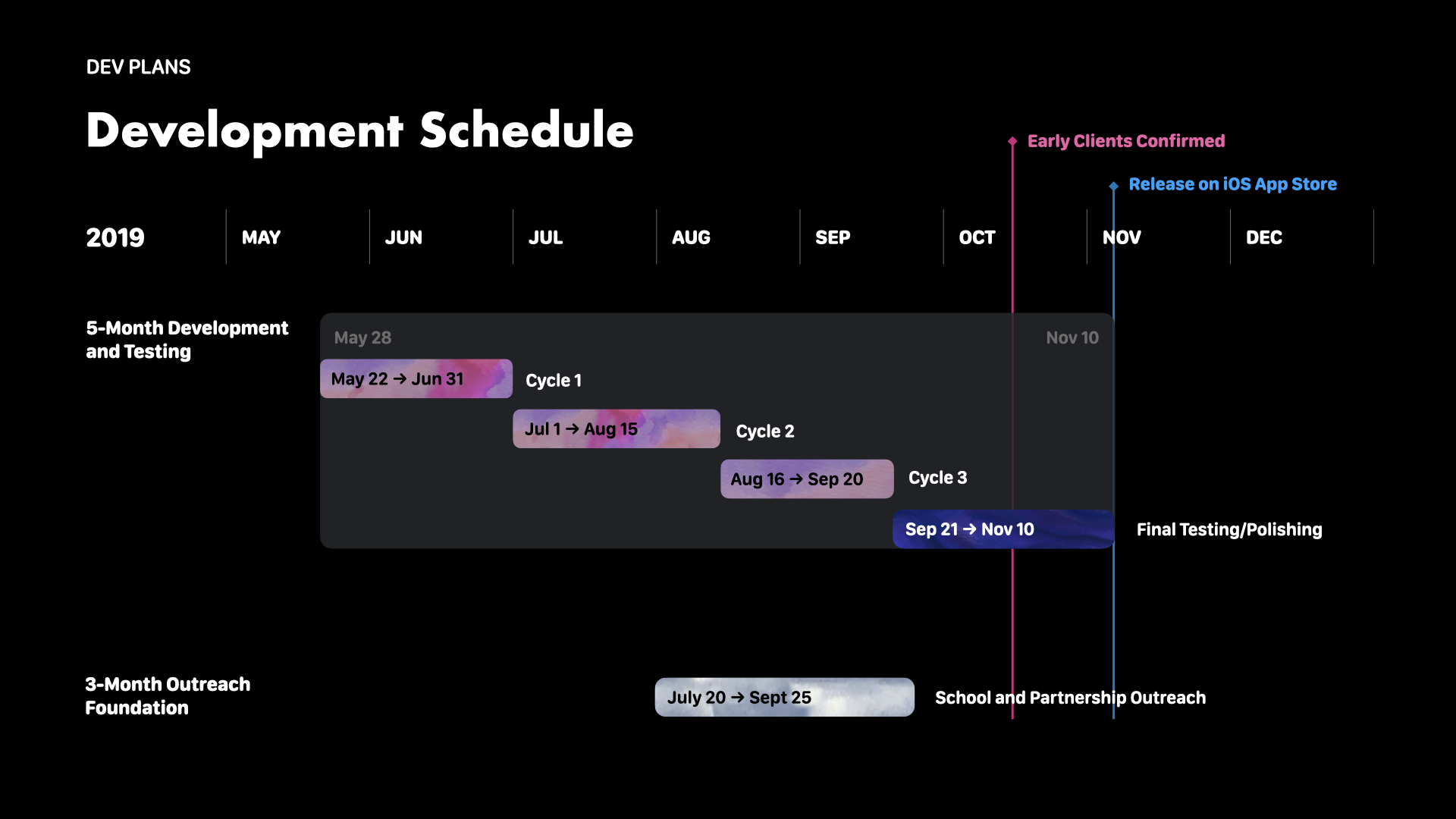
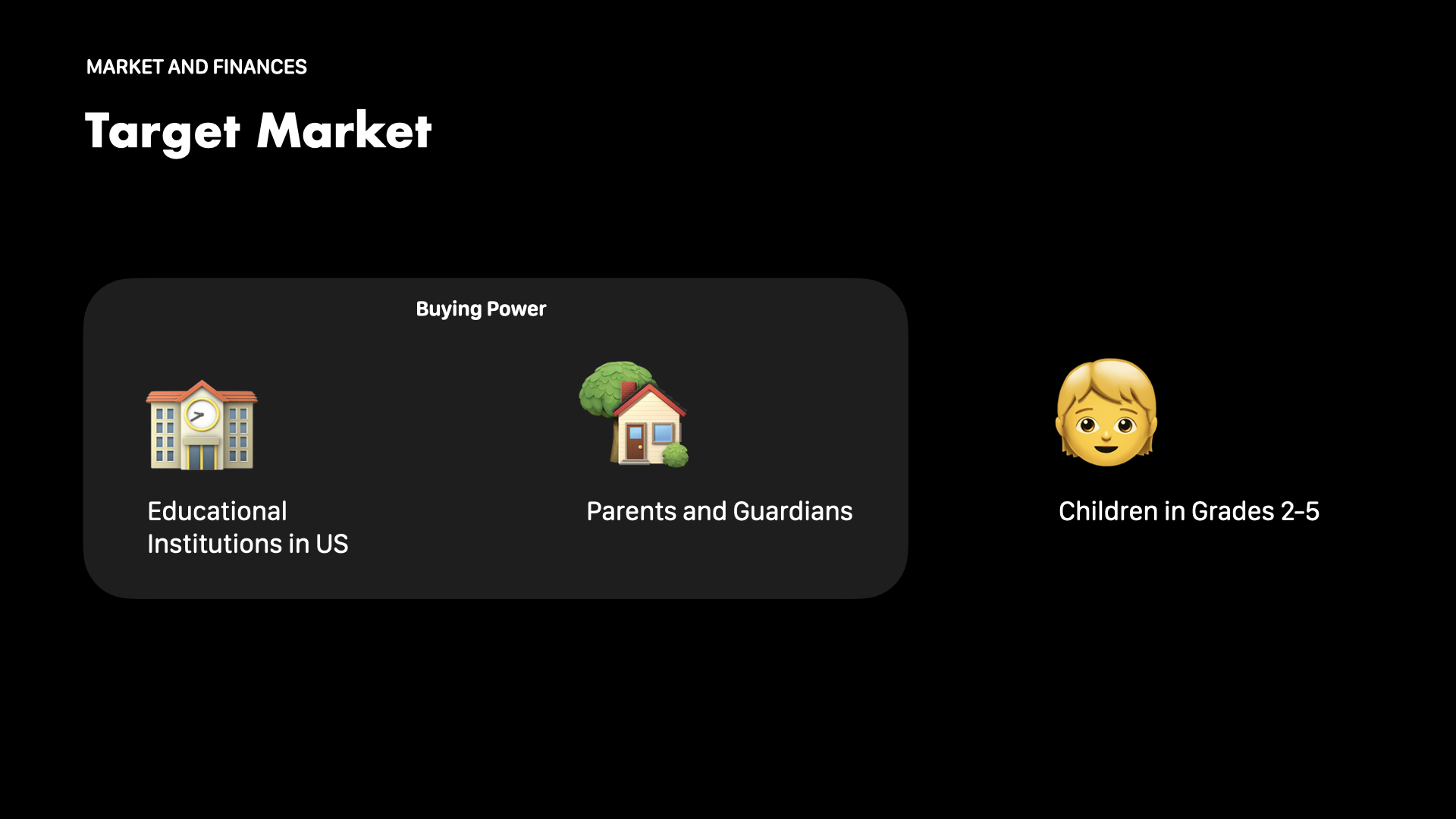


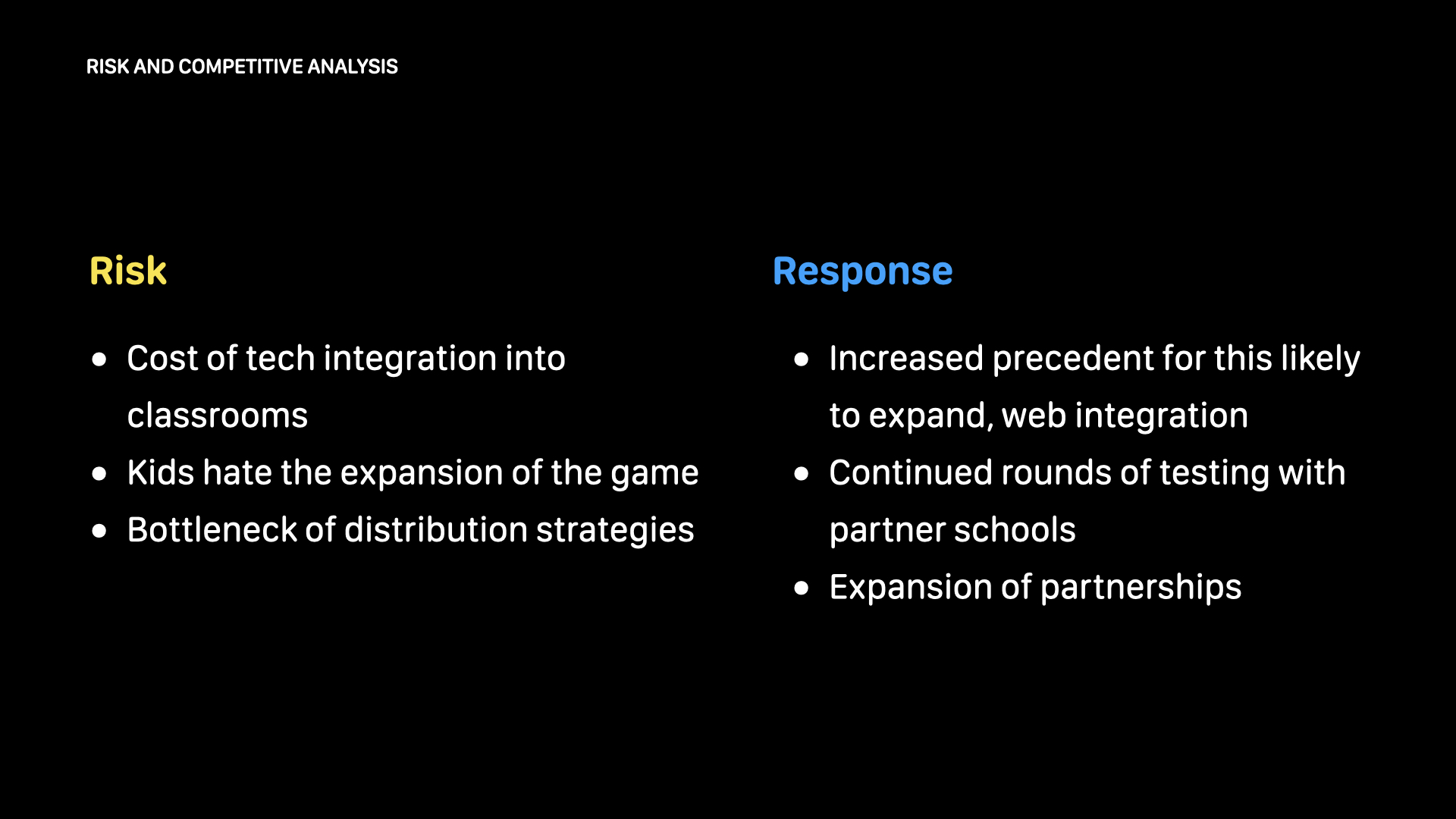
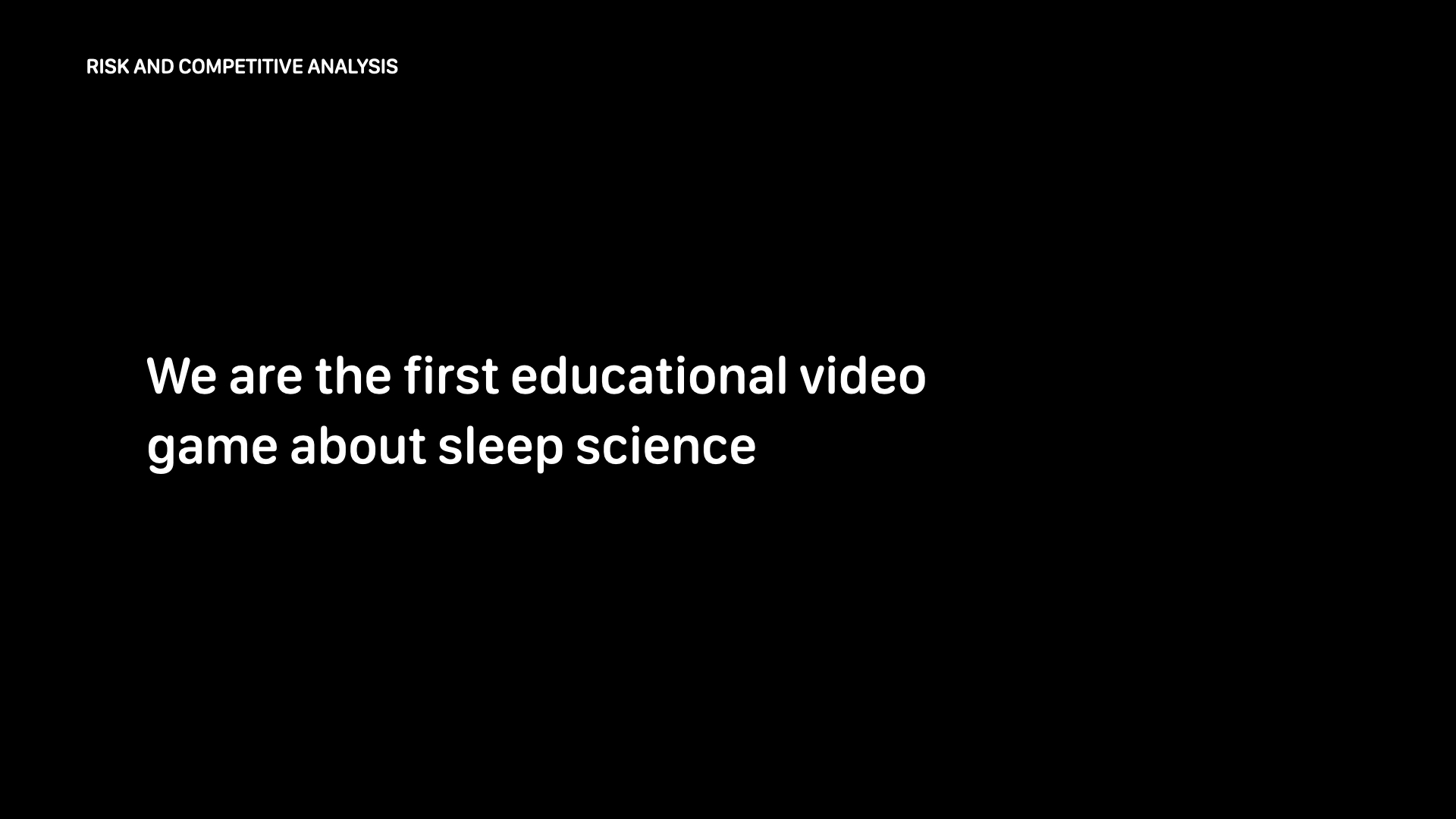

This project helped me grow
I loved this class as it covered my top areas of interest, including immersive technology, entertainment, software, and art. The team structure was an exciting blend of perspectives and disciplines, and it was my first time working on such a high-caliber project. We received very fast-paced and extensive training and were thrown in the deep end. In this class, those with the elected class pitches were tasked with both project management and art direction for their respective game concepts. As a software enthusiast who loves organizational tools like Notion, I was effective in communicating the vision, components, and needs of our design direction. But balancing my responsibilities as a hands-on designer and a high-level planner proved challenging, and I found that I favored design and art direction over project management.
How (not to) scope
Sometimes my artistic and design interests distracted me from prioritizing effective "minimum viable product" (MVP) releases. One of the key learnings from this project was that while our strongest aspects were the concept and initial planning, these became too disconnected from the technical execution. For instance, I was fascinated with the idea of using an organic and rich “unmoving plaid” interactive pattern on the landscape to suggest deeper spaces and “brain activity” beyond the brain’s surface. I created a prototype to demonstrate this to my programmer when I really should have asked myself whether it was essential to a frictionless gameplay experience.
Looking back, we should have made technical proofs of concept for granular features a priority from the earliest stages. Rather than having a fixed game concept that we rushed our prototypes toward, we could have allowed our vision to evolve more organically in response to what we learned from iterative prototyping. This would have made scope adjustments feel less like painful cuts and more like natural refinements of our concept.
Our original plan for the prototype was to create one level with four stages representing a sleep cycle: 1st, 2nd, 3rd, and REM. I believed that limiting the scope in this way would constitute a minimum viable product (MVP). However, I later realized my understanding of "minimum" was too vague when I should have focused on the minimum that could be tested and demonstrated (in our case, a single sleep stage, just a fraction of one level). Ultimately at a later stage to ensure timely completion, I made cuts to the scope with the help of my lead developer and by meeting with each team member individually. While necessary, these late-stage adjustments meant letting go of some completed work – something that could have been avoided with earlier technical validation of our concepts.
Having a true MVP from the start, with our creative vision more directly informed by technical progress, would have given us more opportunities for executing on delightful details and polish at the later cycles of development. Coming from a background in visual design and filmmaking, I was used to a more linear progression and unaccustomed to the recursive & iterative nature of software development. But it's good to keep creative aspirations tightly coupled with technical reality through constant prototyping / validation. I want to be more cognizant of this lesson going forward.
Leading
During the semester, I received feedback from my team that I could be more firm on them meeting deadlines. At first, I was uncomfortable with the idea of being too demanding, so I approached tasks with more questions and suggestions rather than clear orders. However, thanks to my team's support and feedback, I grew more confident in my leadership abilities as the semester progressed. One member told me after the final presentations that she would feel motivated to "get it done for Nathan" 🥲.
Despite the missteps, this class threw me out of my comfort zone and significantly grew my creative and professional confidence. Firing on all cylinders for that whole semester, working collaboratively, and adapting quickly to changes in strategy & approach during that semester helped prepare me for my future senior thesis film production and invigorated my love for working with people.
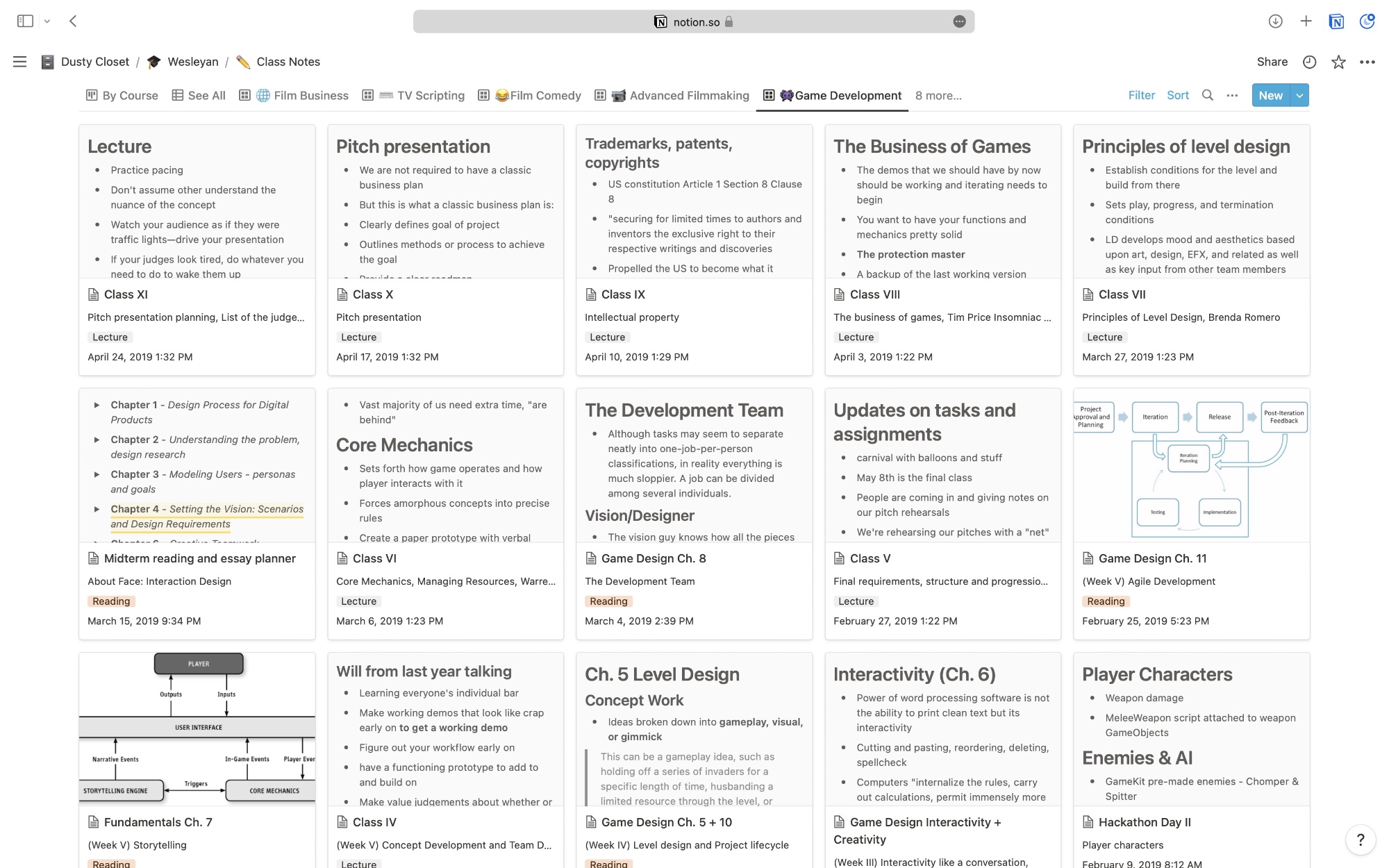
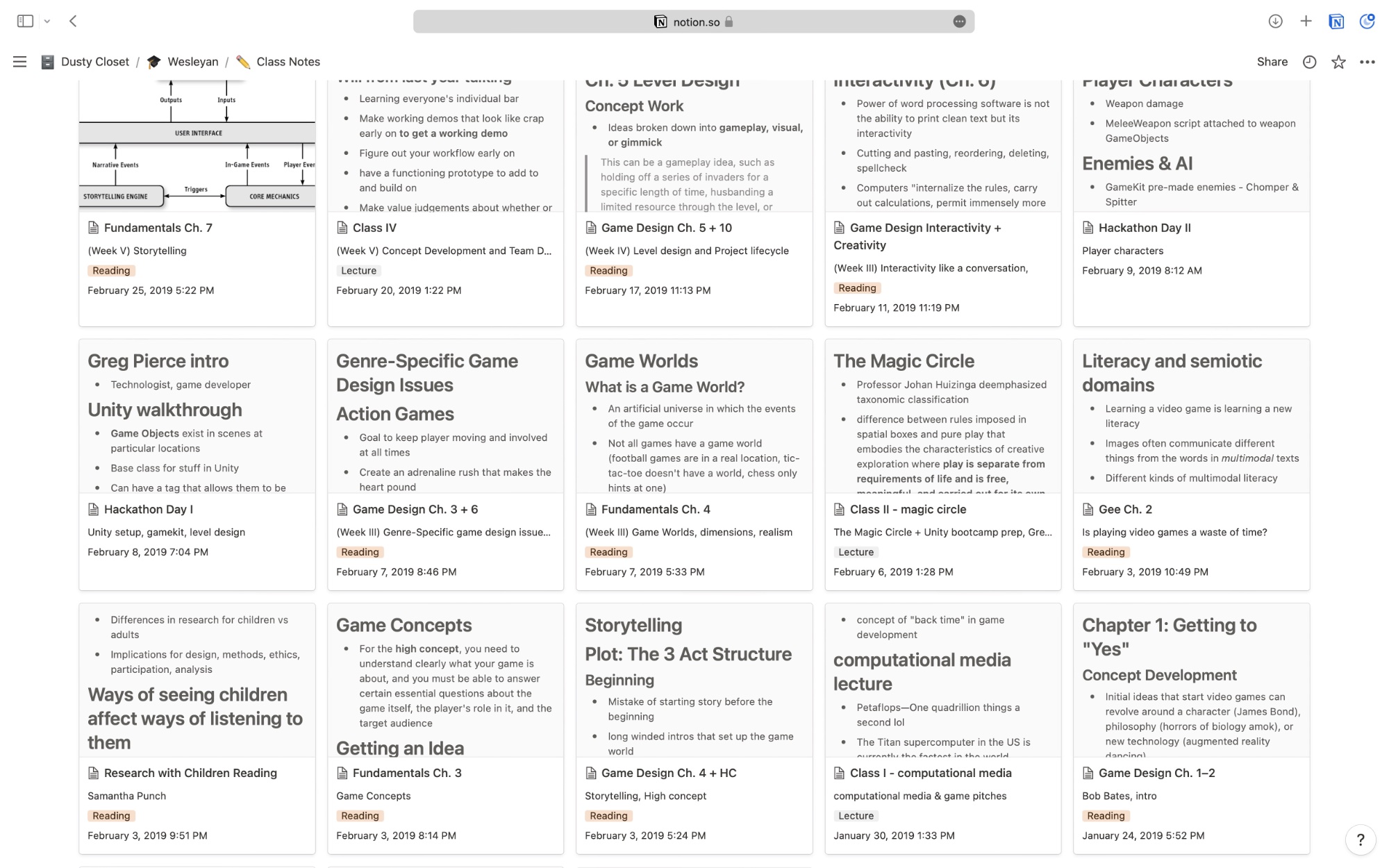
A look at my Game Development class notes from over the semester.
